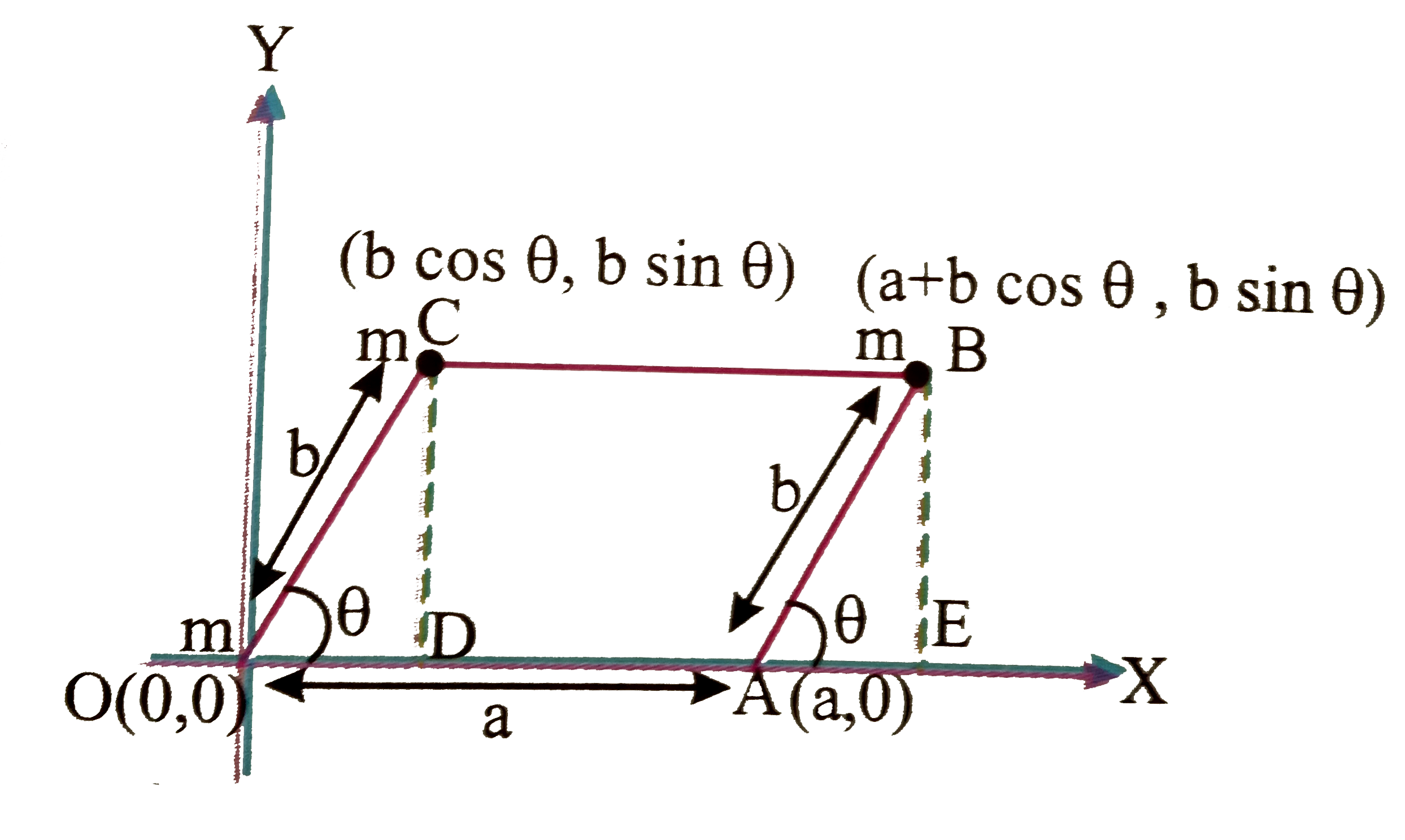Complete Solutions to EXAMPLE of chapter SYSTEM OF PARTICLES of Class 11 book with complete answers and questions
| Class 11 | PHYSICS |
| Chapter | SYSTEM OF PARTICLES |
| NARAYANA | EXAMPLE |
| Number Of Questions | 16 |
| Academic Year | 2023-24 |
If the distance between the centres of the atoms of potassium and bromine in `KBr` (potassium-bromide) molecule is `0.282xx10^(-9)m`, find the centre of mass of this two particle system from potassium (mass of bromine `=80u`, and of potassium `=39u`)
View SolutionTwo blocks of masses `10kg` and `30kg` are placed on X-axis. The first mass is moved on the axis by a distance of `2cm` right. By what distance should the second mass be moved to keep the position of centre of mass unchanged.
View SolutionWhen `'n'` number of particles of masses `m, 2m, 3m,….nm` are at distances `x_1 =1, x_2 =2, x_3=3…x_n = n` units respectively from origin on the X-axis, then find the distance of centre of mass of the system from origin.
View SolutionWhen `'n'` number of particles of masses `m, 2m, 3m,….nm` are at distances `x_1 =1, x_2 =4, x_3=9…x_n = n^2` units respectively from origin on the X-axis, then find the distance of centre of mass of the system from origin.
View SolutionWhen `'n'` number of particles of masses `m` are at distances `x_1 =a, x_2 =ar, x_3=ar^2…x_n = ar^n` ,units from origin on the X-axis, then find the distance of centre of mass of the system from origin.
View SolutionA `1m` long rod having uniform area of cross section is made of four materials. The first `0.2 m` is made of iron, the next `0.3m` of lead, the following `0.2m` of aluminium and the remaining part is made of copper. Find the centre of mass of the rod. The densities of iron, lead, aluminium and copper are `7.9xx10^3 kg//m^3,11.4xx10^3 kg//m^3, 2.7 xx 10^3 kg//m^3 "and" 8.9 xx 10^3kg//^3` respectively.
View SolutionIf the centre of mass of three particles of masses of `1kg, 2kg, 3kg` is at `(2,2,2)`, then where should a fourth particle of mass `4kg` be placed so that the combined centre of mass may be at `(0,0,0).`
View SolutionFind position of centre of mass of four particle system, which are at the vertices of parallelogram, as shown in figure.

View SolutionAn object `A` is dropped from the top of a `30m` high building and at the same moment another object `B` is projected vertically upward with an initial speed of `15m//s` from the base of the building. Mass of the object `A` is `2kg` while mass of the object `B` is `4kg`. Find the maximum height above the ground level attained by the centre of mass of `A` and `B` system (take `g=10m//s^2`)
View SolutionFind the acceleration of centre of mass of the blocks of masses `m_1, m_2 (m_1 gt m_2)` in Atwood's machine.
View SolutionTwo bodies of `6kg` and `4kg` masses have their velocity `5hati - 2 hat j + 10 hat k` and `10hat i - 2 hat j + 5 hat k` respectively. Then, the velocity of their centre of mass is
View SolutionTwo particles `A` and `B` initially at rest, move towards each other, under mutual force of attraction. At an instance when the speed of `A` is `v` and speed of `B` is `2v`, the speed of centre of mass (`CM`) is
View SolutionA `10 kg` boy standing in a `40 kg` boat floating on water is `20 m` away from the shore of the river. If the boy moves `8 m` on the boat towards the shore, then how far is he from the shore ? (Assume no friction between boat and water).
View SolutionA circular disc of radius R is removed from a bigger circular disc of radius 2R such that the cirucmferences of the discs coincide. The centre of mass of the new disc is `alpha/R` from the center of the bigger disc. The value of `alpha` is
View SolutionDistance of the centre of mass of a solid uniform cone from its vertex is `z_0`. It the radius of its base is R and its height is h then `z_0` is equal to:
View SolutionThe density of a linear rod of length L varies as `rho=A+Bx` where x is the distance from the left end. Locate the centre of mass.

View Solution
EXAMPLE questions and complete solutions for chapter SYSTEM OF PARTICLES of NARAYANA PHYSICS (HINGLISH) of Class 11